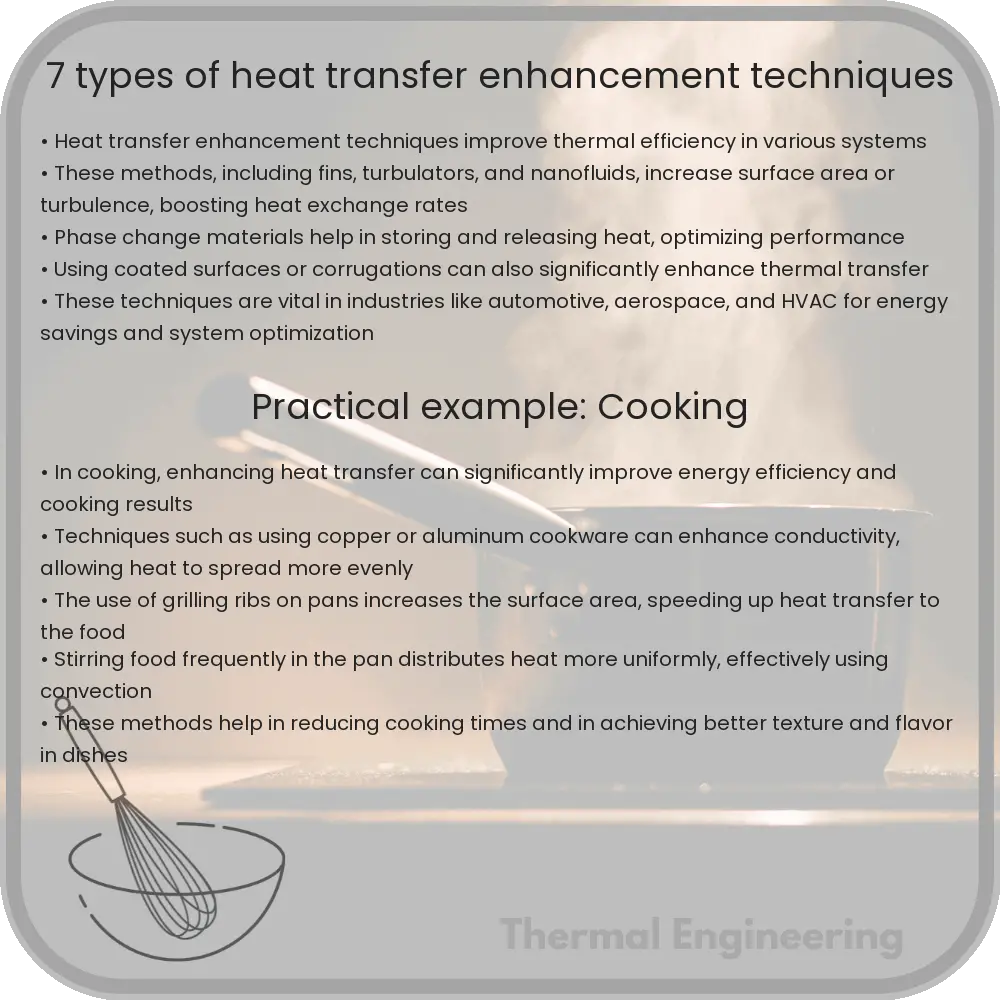Learn about seven effective techniques used to enhance heat transfer in various engineering applications.

7 Types of Heat Transfer Enhancement Techniques
Heat transfer plays a critical role in various engineering applications, from HVAC systems in buildings to cooling systems in electronic devices. Enhancing heat transfer can improve the efficiency and performance of equipment while potentially reducing energy use and costs. Below are seven effective techniques used to enhance heat transfer in different engineering scenarios:
1. Surface Area Increase
Increasing the surface area that is exposed to a heat source or sink can significantly enhance heat transfer. This is because the rate of heat transfer by conduction or convection is directly proportional to the surface area through which heat can be transferred. Techniques include:
- Adding fins or extended surfaces on heat exchangers
- Using microchannels in electronic cooling
- Incorporating porous media in regenerative heat exchangers
2. Improved Heat Transfer Fluids
The properties of the fluid used in the heat transfer process can greatly affect the system’s efficiency. Some enhancements include:
- Using nanofluids, which contain nanoparticles that improve thermal conductivity
- Switching to fluids with higher thermal conductivity or better heat capacity
3. Agitation and Stirring
In liquid heating or cooling systems, stirring or agitating the fluid can disrupt the thermal boundary layer that forms at the heat transfer surface, thereby enhancing heat transfer. Methods include:
- Mechanical agitators in a reactor vessel
- Induced flow using impellers or pumps
4. Phase Change Materials
Materials that change phase (e.g., from solid to liquid) can absorb or release large amounts of heat at constant temperature. Integrating phase change materials (PCMs) can enhance heat transfer during thermal cycling by:
- Stabilizing temperature fluctuations in solar energy systems
- Enhancing thermal management in electronics with high heat fluxes
5. Baffles Installation
Installing baffles in a heat exchanger can redirect the flow path of the fluid, increasing the fluid’s velocity and enhancing heat transfer by convection. This method is particularly useful in shell and tube heat exchangers where:
- Baffles help prevent the formation of stagnant zones
- They can increase the turbulence level of the fluid flow, improving the heat transfer coefficient
6. Finishing Techniques
Surface finishing processes such as polishing or coating surfaces involved in heat transfer can also be used to enhance heat conductivity. Techniques include:
- Polishing to reduce surface roughness, thus improving contact with heat transfer fluids
- Applying thermally conductive coatings that enhance thermal contact resistance
7. Radiation Enhancers
For heat transfer involving radiation, using materials with higher emissivity can increase the rate of heat loss or gain through thermal radiation. Enhancements might involve:
- Selecting materials with naturally high emissivity for surfaces exposed to radiative heat sources
- Coating surfaces with materials that increase emissivity
Each technique has specific applications and advantages, making it essential to choose the most suitable one based on the particular requirements of the system in question. Incorporating these techniques can lead to more efficient thermal systems, reduced energy consumption, and superior overall performance.